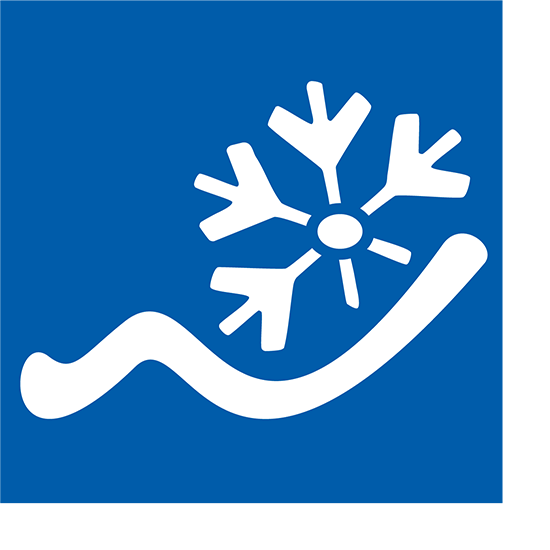Development of slope maintenance
A great deal of sensitivity is required
In earlier times, skiers first had to painstakingly groom their slopes in the morning before the fresh snow compacted into a firm slope. Until the 1950s, this was sometimes done by climbing uphill. Children often took on this task. They were then allowed to ski as a reward for the so-called "trampling". With the advent of the first ski lifts, there was a need for faster, better and more convenient methods of slope grooming.
Initially, home-made rollers made from car tires or other materials were used, which one or two skiers pulled behind them. This was a laborious and dangerous task, as they had to be careful not to be run over by the heavy equipment themselves. Meanwhile, in the Sauerland region, resourceful minds were trying to equip agricultural machinery with rollers. One further development was the use of skimming boards, which the vehicles pulled behind them and pressed the snow down a little.
First motorized snow groomers in the 60s
The age of snow groomers began at the 1960 Winter Olympics in Squaw Valley in the Sierra Nevada, where tracked army vehicles were used for the first time to compact the slopes. In 1962, the Prinoth company designed the first prototype of a snow groomer for slope preparation, the P 60. The Ratrac S was the first series-produced snow groomer to hit the snow in 1963. One year later, Prinoth launched the first series-produced vehicle, the P 15. This was followed in 1968 by the first snow groomer from today's world market leader Kässbohrer. The development of snow groomers picked up speed.
First snow groomers in the Sauerland winter sports arena
The first professional snow groomers arrived in the Sauerland winter sports arena at the end of the 1960s. In 1968, the Rummel brothers are said to have purchased the first snow groomer in the Willingen ski resort. The Ratrak vehicle was used at Ritzhagen. The Rimberg ski area near Bad Fredeburg purchased a snow groomer in 1969. According to a newspaper report, the machine was the only mass-produced snow groomer in Germany at the time and had an impressive 55 hp.
In the same year, operators in the Winterberg ski lift carousel purchase a similar vehicle. The lift companies Quick and Wahle jointly purchased a Fendt snow groomer. The Lely BERO H2 had a 53 hp NSU engine. Instead of the usual "tank steering" (one chain turns, one stands still), the company had developed a special steering gear. To prevent digging into the snow during maneuvering, both tracks remained in motion. The crawler tracks were made of rubber. Series production of the tracks started towards the end of 1968 / 1969. The name BERO is derived from the English words "belt" and "roller", which stands for "conveyor belt" and refers to the caterpillar tracks.
The rollers at that time were only suitable for compacting the snow. The first vehicles did not yet have a blade for pushing. There were no masses of snow like today. The pistes often only had a very thin layer of natural snow and were used on far fewer days than today. On days when the slopes were heavily used and many skiers carried a lot of snow downhill, there were hardly any opportunities to repair thin spots. The operators often had to shovel the snow by hand to the places where it was needed. At the beginning of the 1970s, vehicles from manufacturers such as Prinoth, Hämmerle and Ratrac were also in use in Winterberg.
In the 1970s, manufacturers brought snow rollers with front blades onto the market, while trailing rollers and smoothing boards improved the compaction of the snow. Cable winches made work easier on particularly steep sections. In the mid-70s, manufacturers produced the first rear-mounted snow blowers. The 12-way blades commonly used today are a product of the 1980s.
Powerful high-tech equipment
Today, ultra-modern, powerful snow groomers usually prepare the ski slopes in the evening and at night. If snow falls during the night, the slopes are groomed again in the morning. Winch rollers are used to prepare even steep slopes, while smaller cross-country ski trail groomers are available for ski lift tracks and grooming trails.
The large rollers have up to 520 HP. Unevenness is smoothed out in a single pass with the front blade. The surface of the slopes is milled, smoothed and compacted again with the trailing unit.
In the meantime, the slope rollers are not only used to prepare the slope. They also collect and transmit data for evaluation. Using various systems, GPS or laser, the new snow groomers are able to provide data that can be used to determine how much snow is under and in front of the vehicle - down to the centimeter. By determining the available snow depth, snow production becomes more targeted and efficient. The operators know exactly where in the area the snow guns need to be directed and where the rollers need to push the snow. This saves around 10 percent of energy. Thanks to the increasing digitalization of processes, the entire snow and fleet management can be controlled on the basis of central data collection and evaluation.






